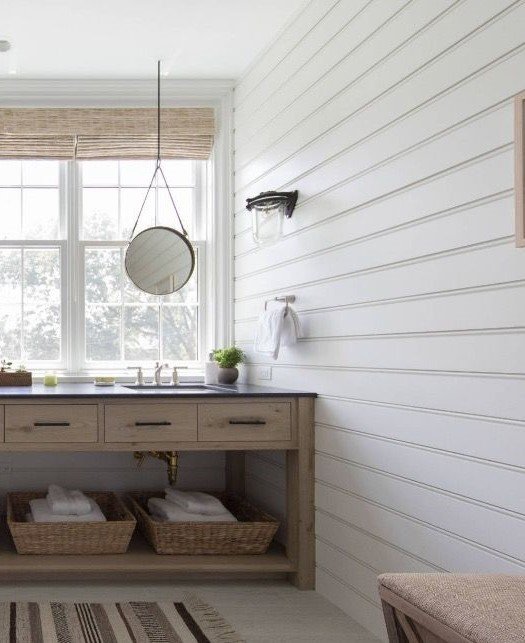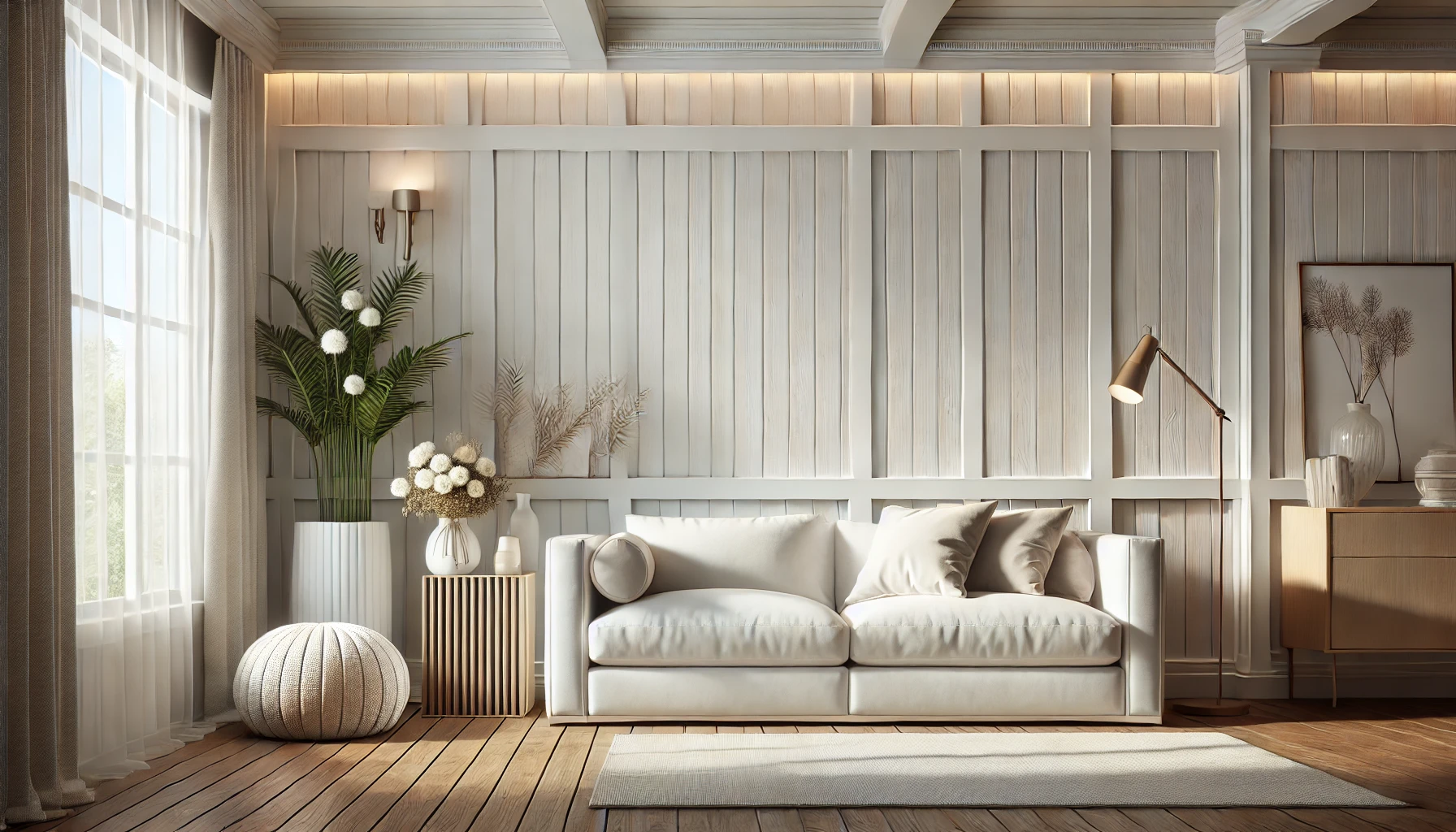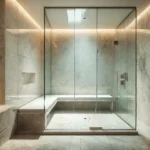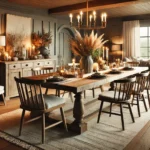Shiplap paneling has taken the interior design world by storm, offering a perfect blend of rustic charm and modern sophistication. This versatile material has become a favorite among homeowners and designers in the USA for its ability to elevate any space with timeless appeal. In this comprehensive guide, we’ll explore everything you need to know about shiplap paneling, from its history and benefits to installation tips and design inspiration.
What Is Shiplap Paneling?
Shiplap paneling refers to a type of wooden board commonly used in interior and exterior applications. The defining feature of shiplap is its rabbeted edges, which allow the boards to overlap slightly, creating distinctive horizontal grooves. This overlapping design not only enhances the aesthetic but also improves durability and weather resistance when used outdoors.
The History of Shiplap Paneling
Shiplap paneling traces its roots to the maritime industry, where it was originally used in shipbuilding due to its overlapping structure that provided excellent water resistance. Over time, this functional feature made its way into homes, particularly in barns and rustic farmhouses. Today, shiplap has transcended its humble origins to become a hallmark of modern interior design, often associated with the popular “farmhouse chic” aesthetic.

Benefits of Shiplap Paneling
1. Versatility
Shiplap paneling works well in various settings, from living rooms and kitchens to bathrooms and accent walls. It complements a range of styles, including farmhouse, coastal, and modern.
2. Timeless Aesthetic
The clean lines and natural texture of shiplap add depth and character to any space, ensuring a timeless look that never goes out of style.
3. Easy Installation
Shiplap is relatively simple to install, making it a popular choice for DIY enthusiasts. Pre-finished options are also available for hassle-free application.
4. Durability
When properly installed and maintained, shiplap is a durable material that can withstand wear and tear, especially in high-traffic areas.
5. Customization Options
Shiplap can be painted, stained, or left natural to suit your specific design preferences.
Types of Shiplap Paneling
1. Traditional Wooden Shiplap
Made from solid wood, traditional shiplap offers an authentic, rustic look. Common wood types include pine, cedar, and oak.
2. MDF Shiplap
Medium-density fiberboard (MDF) shiplap is a budget-friendly alternative that mimics the appearance of wood while being resistant to warping and shrinking.
3. PVC Shiplap
PVC shiplap is a durable, moisture-resistant option ideal for bathrooms and other high-humidity areas.
4. Reclaimed Wood Shiplap
For a sustainable option, reclaimed wood shiplap adds a unique, weathered charm to your space.
How to Install Shiplap Paneling
Materials Needed
- Shiplap boards
- Measuring tape
- Level
- Saw
- Nail gun or adhesive
- Paint or stain (optional)
Step-by-Step Guide
- Prepare the Surface: Ensure the wall is clean and free of debris. For uneven walls, consider installing a plywood backing.
- Measure and Cut: Measure the wall dimensions and cut the shiplap boards to size.
- Start at the Bottom: Begin installing the boards at the bottom of the wall, using a level to ensure straight alignment.
- Secure the Boards: Attach the boards using a nail gun or adhesive, leaving a small gap for expansion if necessary.
- Paint or Stain: Once installed, finish the shiplap with your chosen paint or stain to achieve the desired look.
Design Ideas for Shiplap Paneling
1. Accent Walls
Create a stunning focal point in your living room or bedroom with a shiplap accent wall painted in bold or neutral tones.
2. Kitchen Backsplashes
Add a touch of farmhouse charm to your kitchen with a shiplap backsplash that pairs beautifully with white cabinetry and subway tiles.
3. Bathroom Walls
Use moisture-resistant PVC shiplap to bring warmth and texture to your bathroom.
4. Ceiling Applications
Install shiplap on the ceiling for a unique architectural feature that enhances the sense of space.
Maintaining Your Shiplap Paneling
- Regular Cleaning: Wipe down the panels with a damp cloth to remove dust and dirt.
- Inspect for Damage: Check periodically for cracks or warping, especially in areas with high humidity.
- Repaint or Restain: Refresh the finish as needed to maintain the paneling’s appearance.
FAQs About Shiplap Paneling
1. Is shiplap paneling expensive?
The cost of shiplap varies depending on the material. Traditional wood is more expensive, while MDF and PVC are more budget-friendly options.
2. Can shiplap be used outdoors?
Yes, shiplap can be used outdoors, but ensure you select weather-resistant wood or treated materials to prevent damage.
3. Does shiplap work in modern homes?
Absolutely! Shiplap can be styled to suit modern interiors by pairing it with minimalist decor and neutral colors.
4. How do I prevent shiplap from warping?
Ensure proper installation and maintain consistent indoor humidity levels to minimize warping.
5. Can shiplap be installed over drywall?
Yes, shiplap can be installed directly over drywall. Use adhesive or nails to secure the boards.
Final Thoughts
Shiplap paneling offers a perfect balance of style and functionality, making it an excellent choice for homeowners seeking to enhance their living spaces. Whether you’re aiming for rustic farmhouse charm or sleek modern elegance, shiplap provides endless design possibilities. By following this guide, you can confidently incorporate shiplap paneling into your home and enjoy its timeless beauty for years to come.
Explore the world of shiplap today and transform your home into a masterpiece of design and functionality!






